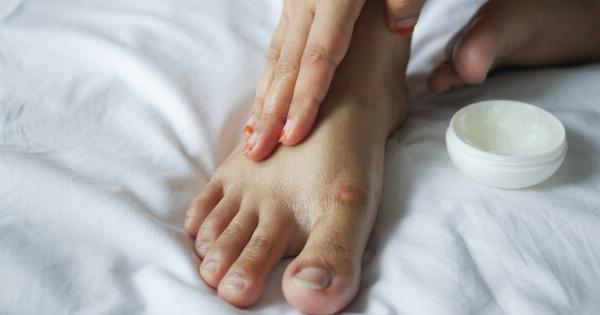Foot fungi are one of the most common infections that affect people of all ages. These fungi grow best in warm, moist, and dark environments, such as sweaty socks and shoes.
They can spread from person to person, and individuals who have a weakened immune system or an injury on their feet are more susceptible to these infections. Luckily, there are plenty of practical ways to prevent foot fungi and avoid future infections. Here are ten tips to keep your feet healthy and fungus-free:.
1. Keep Your Feet Clean and Dry
One of the easiest ways to prevent foot fungi is to keep your feet clean and dry. Make sure to wash your feet with soap and water every day, and dry them thoroughly afterward, especially in between your toes.
Use a clean towel or let your feet air-dry before putting on your shoes and socks. Avoid using the same towel for both your feet and the rest of your body to prevent cross-contamination.
2. Wear Breathable Shoes and Socks
Foot fungi thrive in warm and moist environments, such as sweaty shoes and socks. To prevent this, wear breathable footwear and moisture-wicking socks that keep your feet dry and comfortable.
Avoid wearing the same shoes for two consecutive days, and let them air out before wearing them again. This allows any moisture to evaporate, which prevents the fungi from growing.
3. Use Antifungal Powders and Sprays
You can prevent foot fungi by using antifungal powders and sprays on your feet and shoes. These products inhibit the growth of fungi and keep your feet fresh and dry. Apply them every day or as directed on the label.
Make sure to apply them in between your toes, where fungi tend to thrive.
4. Don’t Share Shoes and Socks
Foot fungi are contagious, and they can spread from person to person through direct contact or sharing of footwear. To prevent this, don’t share your shoes and socks with others, especially if they have a history of foot fungi.
If you need to borrow shoes or socks, wear disposable or clean socks to protect your feet from potential infections.
5. Use Footwear in Public Places
Public places such as gyms, swimming pools, and locker rooms are breeding grounds for foot fungi. To avoid picking up or spreading fungi, wear sandals or flip-flops in these areas.
Avoid walking barefoot, as it can increase your risk of infection and exposure.
6. Keep Your Nails Trimmed and Clean
Foot fungi can also infect your toenails, causing thick, yellow, and crumbly nails. To prevent this, keep your nails trimmed and clean. Use nail clippers to trim your nails straight across, and file them afterward to smooth any rough edges.
Don’t cut your nails too short, as it can create small cuts that allow fungi to enter your nail bed.
7. Disinfect Your Shoes and Socks
Foot fungi can live on your shoes and socks for a long time, even after you’ve treated your feet. To disinfect them, use a solution of diluted bleach or antifungal spray and water.
Wipe the interior and exterior of your shoes with a cloth soaked in the solution, and let them dry in the sun or a well-ventilated area. Wash your socks in hot water and detergent, and avoid reusing the same pair until they’re completely dry.
8. Check Your Feet Regularly
Checking your feet regularly can help you spot any signs of foot fungi or other infections. Look for redness, scaling, itching, blisters, or other symptoms on your skin and nails.
If you notice any changes, see a doctor or a podiatrist for a diagnosis and treatment. Early detection can prevent the infection from spreading and limit the damage to your feet.
9. Choose Natural Remedies
Some natural remedies can help prevent foot fungi and promote healthy skin and nails. For instance, tea tree oil has antifungal and anti-inflammatory properties that can fight off fungi and soothe your skin.
Apply a few drops of tea tree oil on your feet and nails, or mix it with a carrier oil such as coconut or olive oil for a gentler effect. You can also soak your feet in vinegar or epsom salt, which can kill bacteria and fungi and relieve foot odor and inflammation.
10. Practice Good Foot Hygiene
Practicing good foot hygiene is essential for preventing foot fungi and maintaining healthy feet.
This includes wearing comfortable shoes that fit well, avoiding tight or pointed-toe shoes that can cause blisters and calluses, and avoiding walking barefoot in public areas. It also means keeping your feet moisturized with a non-petroleum-based lotion, avoiding cutting or removing your cuticles, and not using overly hot water when washing or soaking your feet.






























